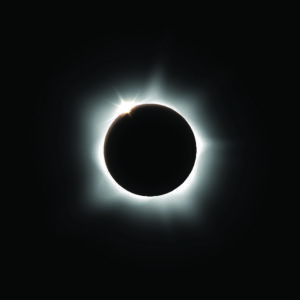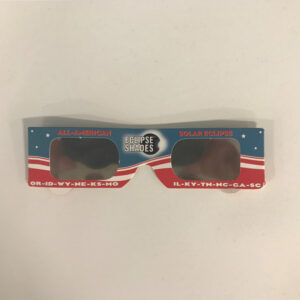You’ve probably heard the buzz around the total solar eclipse that will be happening August 21, 2017. As eye care professionals, it is likely that many of your friends and family members will be asking you about it too. But even if you think you are being safe about it, you may not realize that there are still definite risks for harm to your eyes.
JUST ANOTHER ECLIPSE?
Yes and no. If you are reading this, chances are good that you are living in or attending school in the contiguous United States, which is the path that this total solar eclipse will take. In addition to it being something that is happening in our neck of the woods, it is also something that doesn’t happen often in general, which makes it all the more special.
With the specific angle and distance that the moon orbits Earth, there are a few eclipse events that happen each year, both solar and lunar. But a total solar eclipse like the one happening on August 21st is a spectacle that only happens every 18 months. What’s more is that we will get to witness something that is only visible to less than 0.5% of Earth’s surface and the first total solar eclipse to cover coast to coast since 1918.
SAFETY FIRST
Before you go searching for your maximum coverage sunglasses or planning to simply look away before and after totality has occurred, be aware that no matter the lengths you go to be safe, precautions should be taken any time you are planning to look in the direction of the sun. Staring at the sun can cause solar retinopathy, which damages the fovea and causes loss of visual acuity. Sunglasses, unfiltered telescopes, and polarizing filters are not safe to use to view the eclipse.
First, there are special solar glasses that are made specifically for solar eclipses. These can be purchased at retail stores or online (see authorized dealers here), or picked up for free at libraries across the country (see participating libraries here). But, it should be known that even with these specific solar shields, there are still risks involved. Recommendations from NASA include solar glasses that:

1. Have a designated ISO 12312-2 certification visible on the product
2. Are not more than 3 years old, have no scratches, nor wrinkled lenses
3. Have the manufacturer’s information printed on the product, including company name and address
Second, remember that the only time it is safe to remove your solar glasses is when the moon is fully blocking the sun. This time is known as “totality,” during which the darkness can last up to 2 minutes and 40 seconds depending on where you live. When the eclipse is almost over, you will see beads of light called Bailey’s Beads forming at the trailing edge which is a sign to put the solar glasses back on, stat!
But what if you don’t have solar glasses and decide to watch the eclipse anyway? The answer is easy: don’t. That’s right, don’t watch it. If you want to observe the total solar eclipse, you can still enjoy this magnificent event without even having to look up at the sky. To do this, grab anything that has a circular pattern that you can see through; even the occluder you use to pinhole patients will work nicely. Simply hold it out a few feet away from a flat surface and you will see the shadow of a perfect circle slowly closing in as the eclipse is happening. Some people will even use dish strainers or punch a bunch of holes in a piece of paper—anything remotely close to these will help demonstrate the rare and unique event in the sky.
A WORD FOR THOSE OUTSIDE OF THE PATH OF TOTALITY
The total solar eclipse is not just being talked about because of how interesting it is to observe—it’s for anyone along the 70-mile wide path from Oregon to South Carolina. People here should expect to experience darkness and a drop in temperature. Something to keep in mind is that even people living outside of the path in the U.S. will still be able to view this eclipse to some degree. This is known as a partial eclipse, where the moon covers part of the sun’s disk. If you are not in the path of totality, you must use eclipse glasses to protect your eyes from the sun’s harmful rays.
The total solar eclipse will last just a minute or two, but the partial solar eclipse will last a couple of hours. Either way, it will be well worth the effort put in to observe it. If you aren’t going to be in the U.S. during this time, don’t worry. The next total solar eclipse in the states will be in 2024!
For more information from the experts on the August 21st eclipse, visit these pages from NASA and the AOA. Don’t forget to pass this information along to your friends and family! Enjoy!

